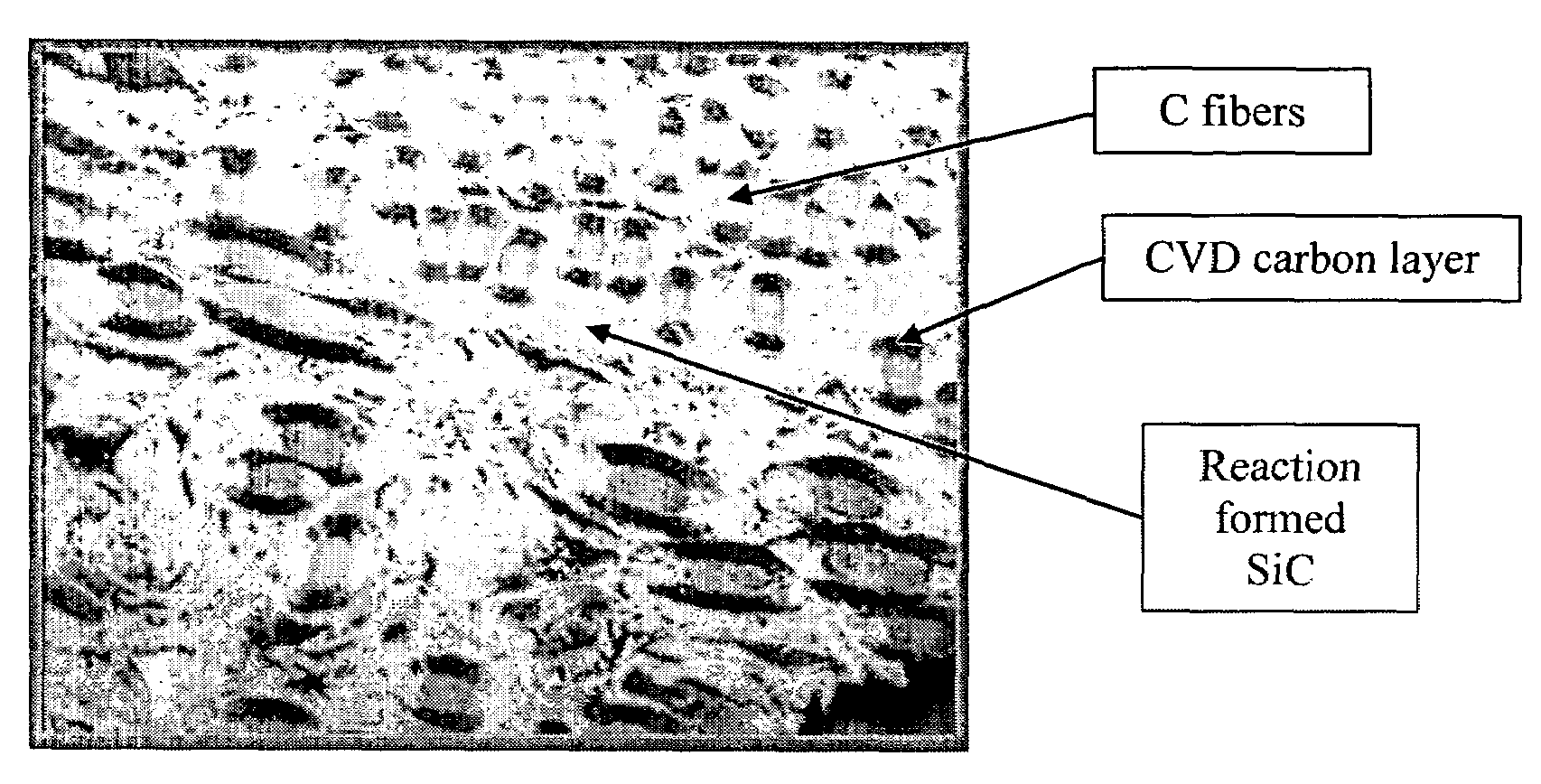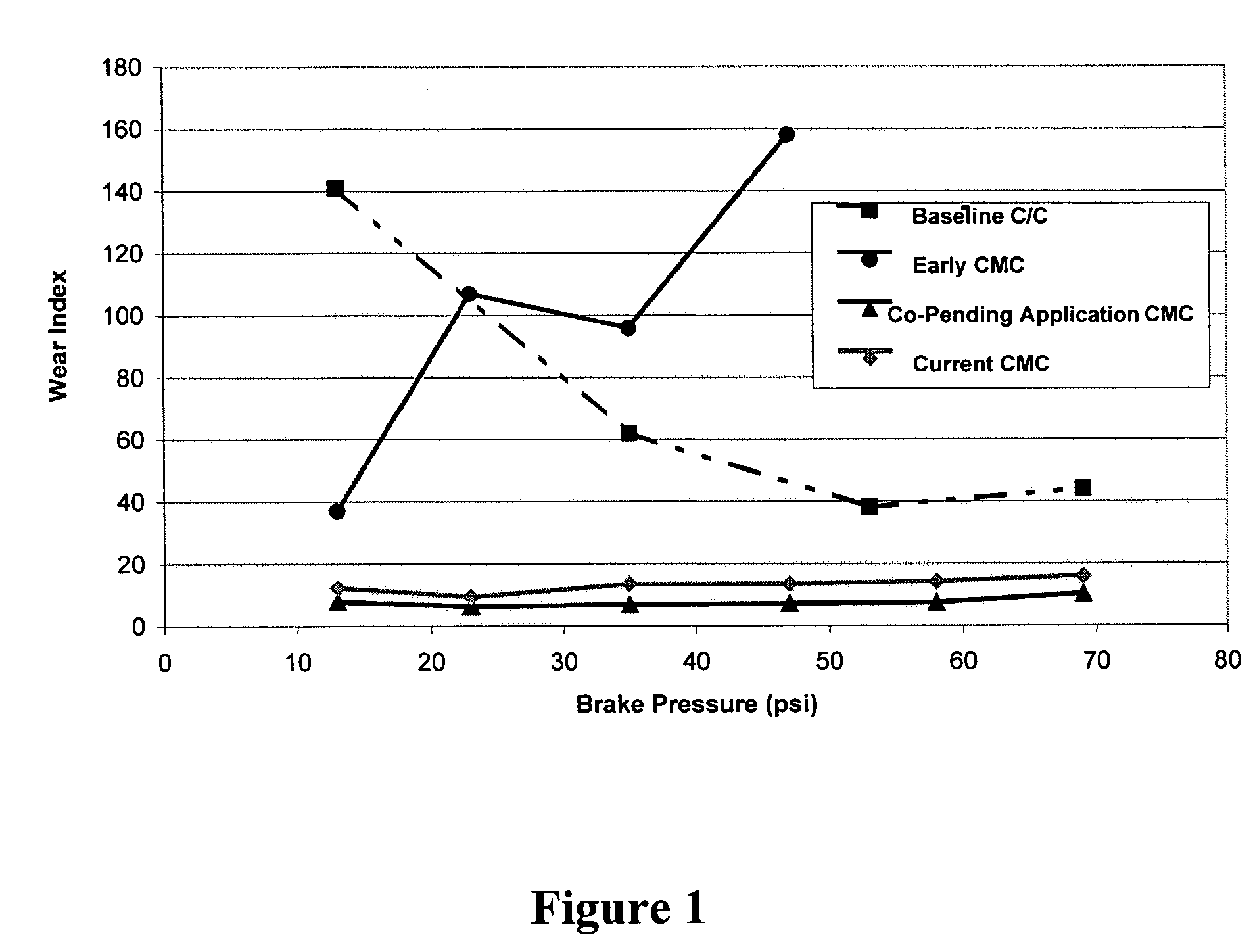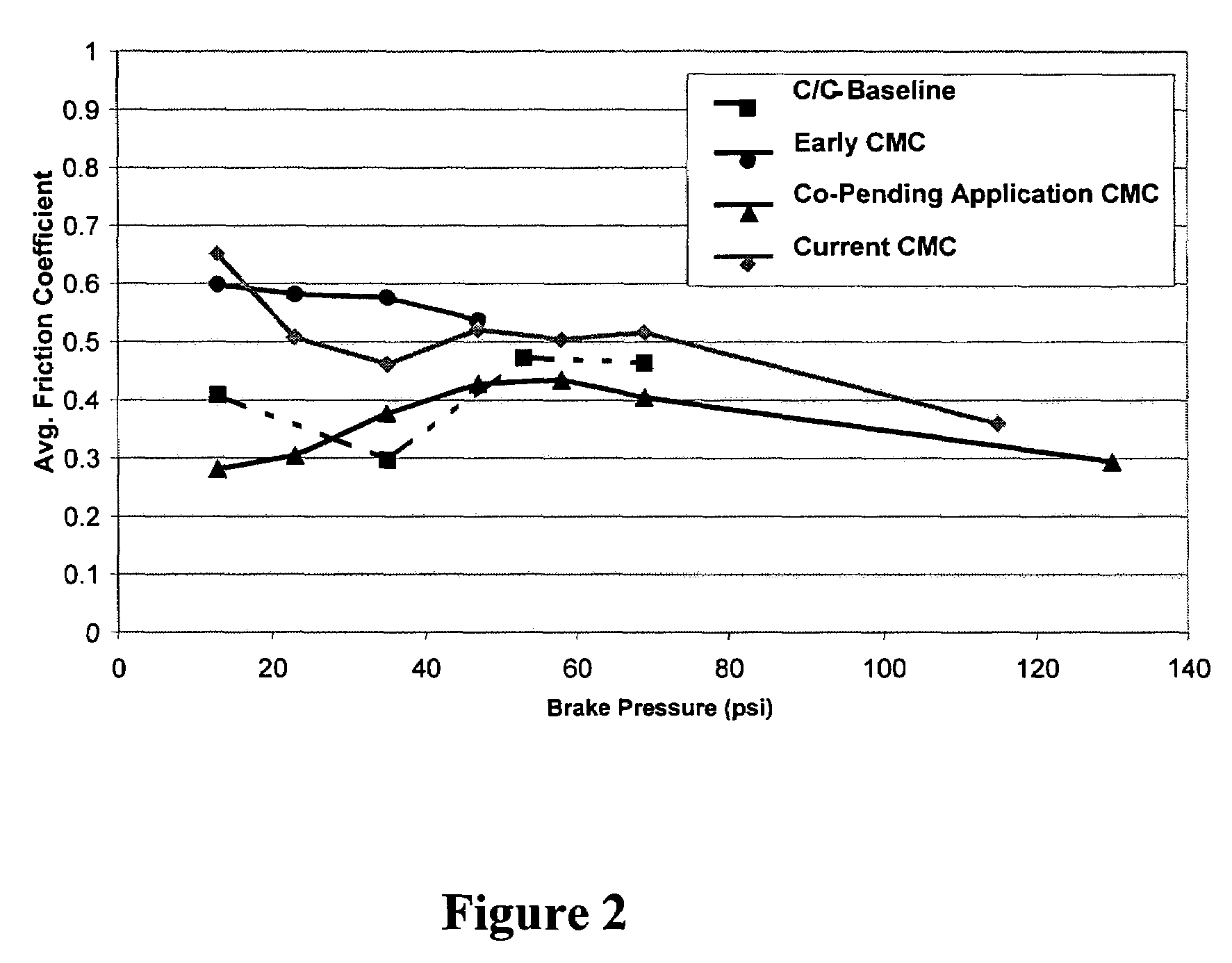Boron carbide based ceramic matrix composites
a ceramic matrix and carbide technology, applied in the field of ceramic matrix composites, can solve the problems of inadequate mechanical properties, low impact resistance, and no success of these attempts
- Summary
- Abstract
- Description
- Claims
- Application Information
AI Technical Summary
Benefits of technology
Problems solved by technology
Method used
Image
Examples
Embodiment Construction
[0042]The present invention is a composite material which comprises a fibrous structure. The fibrous structure can be a plurality of elemental carbon fibers. Alternatively, the fibrous structure of the present invention can be a plurality of either non-oxide ceramic fibers or oxide ceramic fibers. Examples of suitable fibers which can be used in the present invention include pitch-based carbon fibers, polyacrylonitrile (“PAN”) fibers, Rayon fabric-based carbon fibers, and both oxide and non-oxide ceramic fibers. The fibers are formed into a preform. Methods to form preforms are described in the following patents: U.S. Pat. No. 5,869,411 to Bazshushtari et al., issued Feb. 9, 1999; U.S. Pat. No. 5,853,485 to Rudolph et al., issued Dec. 29, 1998; U.S. Pat. No. 5,688,577 to Smith et al., issued Nov. 18, 1997; U.S. Pat. No. 5,609,707 to Bazshushtari et al., issued Mar. 11, 1997; U.S. Pat. No. 5,515,585 to Sheehan et al., issued May 14, 1996; U.S. Pat. No. 5,480,678 to Rudolph et al., is...
PUM
| Property | Measurement | Unit |
|---|---|---|
| grain size | aaaaa | aaaaa |
| temperature | aaaaa | aaaaa |
| particle size | aaaaa | aaaaa |
Abstract
Description
Claims
Application Information
 Login to View More
Login to View More - R&D
- Intellectual Property
- Life Sciences
- Materials
- Tech Scout
- Unparalleled Data Quality
- Higher Quality Content
- 60% Fewer Hallucinations
Browse by: Latest US Patents, China's latest patents, Technical Efficacy Thesaurus, Application Domain, Technology Topic, Popular Technical Reports.
© 2025 PatSnap. All rights reserved.Legal|Privacy policy|Modern Slavery Act Transparency Statement|Sitemap|About US| Contact US: help@patsnap.com



